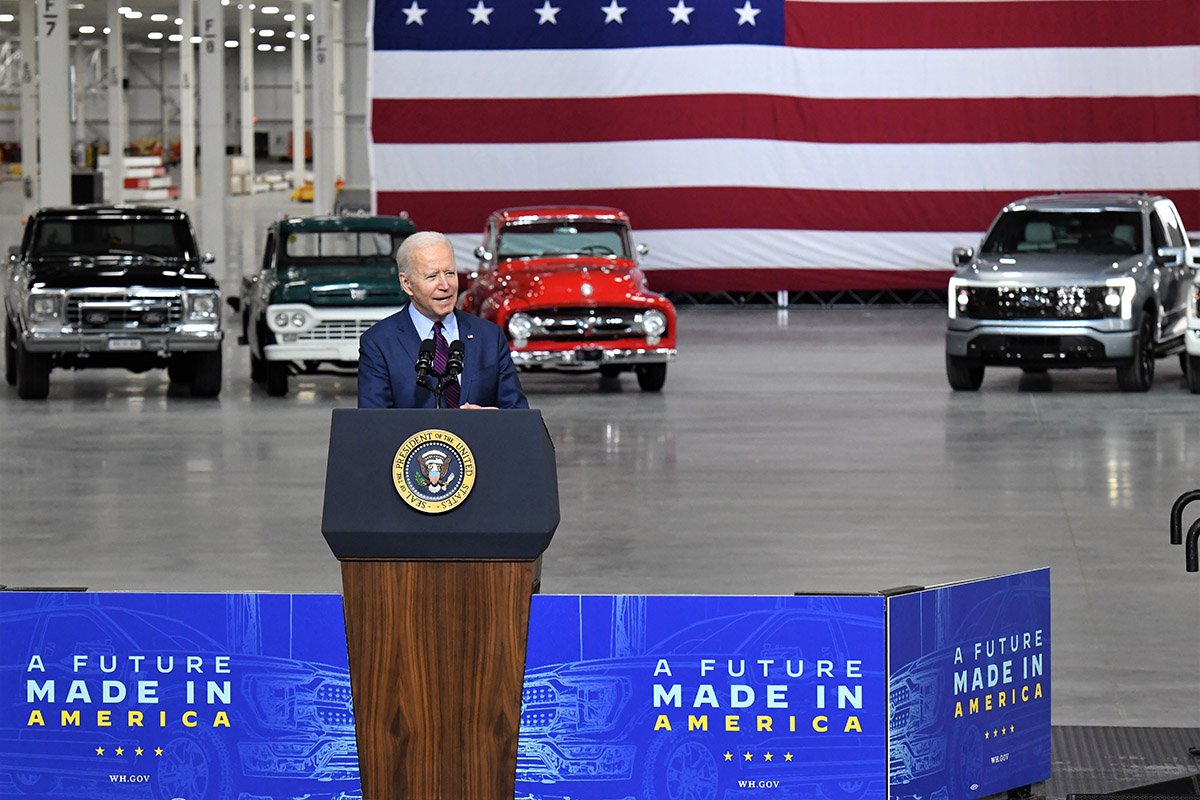

By Esma Mesihovic
On Tuesday, President Joe Biden visited the Ford Rouge Electric Vehicle Center in Dearborn, Michigan to view the electric Ford F-150 Lightning as a part of his plan to spur growth in the U.S. electric vehicle market.
President Biden sees America’s future in electric vehicles to tackle the problem of climate change and create new jobs in the transforming automotive sector. Catching sight of electric cars or charging stations while driving an electric vehicle of my own is a genuinely happy sight to see –– especially when knowing that I am very well a significant part of this worldwide shift from internal combustion engines to electric.
It won’t be an easy journey, but I sincerely hope President Biden’s vision becomes a reality.
Because it is still a budding industry, there is plenty of space for problems in growth and market, such as setting an affordable price for the car and meeting the growing demand for charging stations. Additionally, high-flying stocks taking sudden nosedives make room for investment risks.
In the past years, China has put public policies to address the concern of growing air pollution and carbon emissions in the country. Currently securing 80 percent of global manufacturing capacity for the lithium-ion batteries used in most electric vehicles, China is ahead in the race. But just like President Biden stated to a crowd in the Ford plant, “There’s no turning back.”
According to this article from the Washington Post, on Tuesday, President Biden used the arrival of an electric American-produced pickup truck to pitch his $2.3 trillion infrastructure package. He argued that the United States needs to press forward against Chinese auto manufacturers by wielding the electric vehicle market. The sneak peek of the Ford F-150 Lightning sparked a conversation about the importance of Ford’s decision to release the electric vehicle.
This decision is a significant and symbolic move for the leading U.S. automaker. Ford’s F-series is one of the best-selling vehicles in the U.S., making the advent of the Ford F-150 pose major implications for the EV market and efforts to reduce climate change.
According to a recent report from the International Energy Agency, electric vehicles need to boost 5 percent of global sales to 60 percent in less than a decade for the energy sector to reduce its greenhouse gas emissions to net-zero by 2050. In that case, all new cars need to be electric in the year 2035. Biden has set a goal of cutting all U.S. emissions by 2050 — and that encompasses 1.9 billion metric tons each year from transportation. This should prevent severe environmental consequences and also improve the quality of life in the U.S.
As always, there are downsides to the situation: the battery production of electric vehicles leaves a greater environmental footprint than the production of internal combustion engines. The batteries are made with lithium, which, like any raw material, requires mining. Being in high demand, mining lithium can have serious environmental and ethical consequences. It’s an argument many people who don’t like electric vehicles use to strengthen their standpoint.
Essentially, taking the whole process of mining, refinement, production and use into consideration, conventional gas cars emit much more than electric vehicles. The method of mining crude oil gas releases carbon dioxide, methane and nitrous oxide into the atmosphere, and oil refineries release billions of tons of carbon dioxide into the air. In all phases of their life cycle, fossil-fueled cars release more emissions. Using average grid electricity, EVs come out about 18 percent better in terms of their carbon footprint.
Additionally, the internal combustion engine industry is more efficient because it is much older than the electric industry, which is still in its infancy. As more electric vehicles are made, wind, solar and hydroelectric power plants become more common, the efficiency at which electric cars operate should also improve.
When electric cars are mentioned, people often picture a shiny Tesla model steering down the road of a remote rural nowhere-ville. They don’t imagine the near future. Ultimately, it’s a journey from being an early adopter to the mass consumer, and putting the lid on fear or perhaps “range anxiety,” which some are likely experiencing — a type of fear that speaking as a driver of an electric vehicle, is easy to get rid of.
 Esma is an English major and Environmental Planning Minor located in Sacramento, California. When she isn’t writing or reading, she can be found chasing after her cat, Kiki.
Esma is an English major and Environmental Planning Minor located in Sacramento, California. When she isn’t writing or reading, she can be found chasing after her cat, Kiki.
Support our work – to become a sustaining at $5 – $10- $25 per month hit the link:
